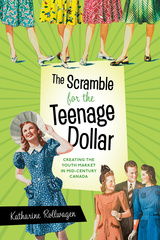
What Nudism Exposes offers an original perspective on postwar Canada by situating the nudist movement within the broader social and cultural context and considering how nudist clubs navigated changing times.
As the nudist movement took root in Canada after the Second World War, its members advanced the idea that going nude and looking at the nude bodies of others satisfied natural curiosity, loosened the hold of social taboos, and encouraged mental health. By the 1970s, nudists increasingly emphasized the pleasurable aspects of their practice. Mary-Ann Shantz contends that throughout the postwar decades, nudists sought social approval as they engaged with contemporary concerns about childrearing, sexuality, public nudity, and the natural environment. Nudist clubs were committed to dissociating nudity from sexuality and to creating space for men, women, and children to socialize in the nude, extolling the movement as complementary with modern family life.
This perceptive, eminently readable book explains the perspectives of the nudist movement while questioning its assumptions, particularly the defence of nudity as natural. What nudism ultimately exposes is how the body figures at the intersection of nature and culture, the individual and the social, the private and the public.
This highly original work will find an audience among students and scholars of Canadian history and those more broadly interested in transnational histories of the body, gender and sexuality, and childhood. General readers of Canadian history and the history of the postwar period will also put it on their reading lists.
... [a] richly researched and insightful book...
Shantz goes a long way in providing a multi-faceted history not only of recreational nudity in mid-century Canada, but also of the possibilities and limitations of non-conformity in the postwar period.'
Shantz directly contributes to the scholarship on the history of the body.
What Nudism Exposes… is 'revealing' and incredibly valuable to historians of postwar North American society and culture.'
The book makes visible the inner contradictions of [the Nudist] movement, which Shantz explores particularly in relation to gender norms and the sexualization of women’s bodies as well as nudists’ relationships with nature and the environment.
What Nudism Exposes deftly explores the fascinating but little-known history of nudism, woven into the larger social story of postwar Canada. No other book focuses on issues of gender relations and sexuality in this context.
By studying nudism, Mary-Ann Shantz offers a novel lens on significant concerns about Canadian society after the Second World War.
Mary-Ann Shantz is a historian, researcher, and project manager who lives in Edmonton, Alberta. She is a contributor to Contesting Bodies and Nation in Canadian History and has been published in Histoire sociale/Social History and the Journal of the History of Childhood and Youth.
Introduction
Part 1: Nudism Comes to Canada
1 Building a Movement
2 Constructing Community at the Club
3 Regulating Sexuality
4 Navigating Gender Norms
5 Raising Young Nudists
Part 2: Nudism on Display
6 Photographs in Sunbathing for Health Magazine, 1947–59
7 The Pageant Tradition and Miss Nude World
Part 3: Nudism, the Natural Environment, and the Regulation of Space
8 Cultivating Nature and Protecting Privacy at the Club
9 Defending Nature and Public Nudity at Wreck Beach, 1969–79
Conclusion
Notes; Bibliography; Index













